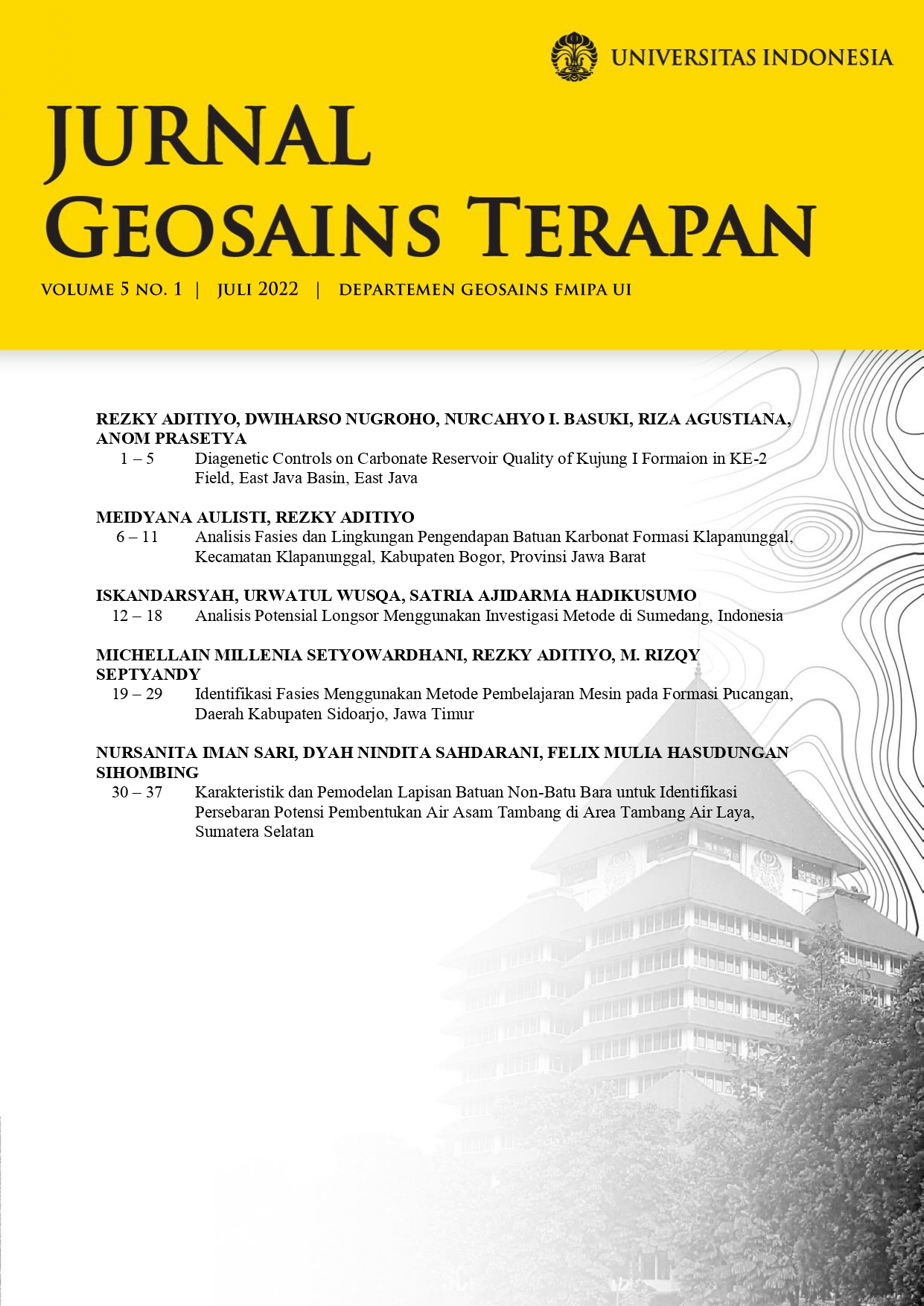Diagenetic Controls on Carbonate Reservoir Quality of Kujung I Formation in KE-2 Field, East Java Basin, East Java.
Kata Kunci:
diagenesis, rock type, carbonate reservoir, reservoir quality, Kujung FormationAbstrak
Early Miocene Kujung I Formation in KE-2 Field is a shelf edge barrier reef on North Madura Platform, East Java Basin. It was subsequently modified in near surface and burial diagenetic environments. Study has been made to establish the paragenetic sequence and effect of diagenesis on reservoir quality.
Rock type identification was conducted using Rock Quality Index (RQI) and Flow Zone Indicator (FZI) methods from routine core analysis data. Subsequently, thin section, SEM, and XRD analysis were carried out to find out the link between geological attributes and petrophysical properties.
Five major facies were identified: skeletal packstone, larger foraminifera wackestone, larger foraminifera packstone, coral packstone, shale, rhodolithic packstone, rhodolithic grainstone, and larger foraminifera grainstone. Diagenetic process which formed pore type and pore size is likely geological attributes controlling rock type association. Fibrous and botryoidal cement formed during shallow marine diagenesis. Subsequent exposure to a meteoric diagenetic environment resulting in leaching of high Mg calcite and aragonite, created separate vugs, moldic porosity. Burial diagenesis has resulted in compaction and stylolitization. Post burial diagenesis may result touching-vugs porosity and permeability, primarily in grain-dominated facies.
Studied interval then can be classified into 5 rock type (RT), those are RT A – touching vugs porosity, RT B – touching vugs dan separate vugs, RT C – interparticle and separate vugs, RT D – separate vugs porosity, RT E – interparticle and separate vugs porosity. The rock type could define the reservoir quality, thus important to further exploration and development planning in KE-2 Field.
Referensi
Abbaszadeh, M., Fujii, H., dan Fujimoto, F. (1996): Permeability Prediction by Hydraulic Flow Units-Theory and Applications,SPE Formation Evaluation, SPE paper 30158, 263-271.
Amaefule, J.O., Altunbay, D., Tiab, D., Kersey., D.G., dan Keelan, D.K. (1993): Enhanced reservoir description: using core and log data to identify hydraulic (flow) unit and predict permeability in uncored intervals/wells, 16 hal., SPE Annual Technical Conference and Exhibition, SPE paper 26436.
Lonoy, A. (2006): Making sense of carbonate pore systems, AAPG Bulletin, 90, 1381-1405.
Lucia, F.J. (1983): Petrophysical parameters estimated from visual descriptions of carbonate rocks, a fields classification of carbonate pore space, Bulletin of The Journal of Petroleum Technology, 629-637.
Lucia, F.J. (1995): Rock-fabric/petrophysical classification of carbonate pore space for reservoir characterization, AAPG Bulletin, 79, 1275–1300.
Satyana, A.H.dan Djumlati,M. (2003): Oligo-Miocene carbonates of the East Java Basin, Indonesia: facies definition leading to recent significant discoveries, AAPG International Conference,Barcelona.
Diterbitkan
Cara Mengutip
Lisensi
Hak Cipta (c) 2022 Jurnal Geosains Terapan

Artikel ini berlisensi Creative Commons Attribution-NonCommercial-NoDerivatives 4.0 International License.


